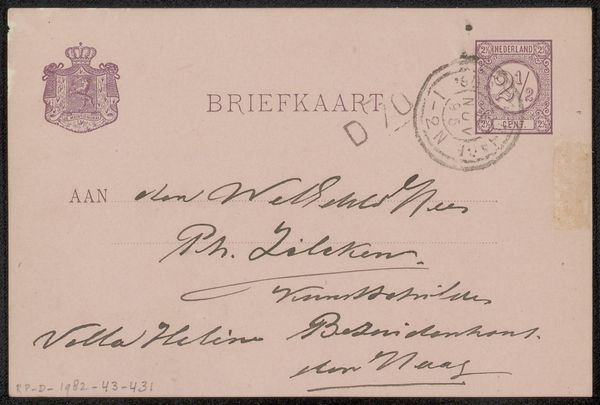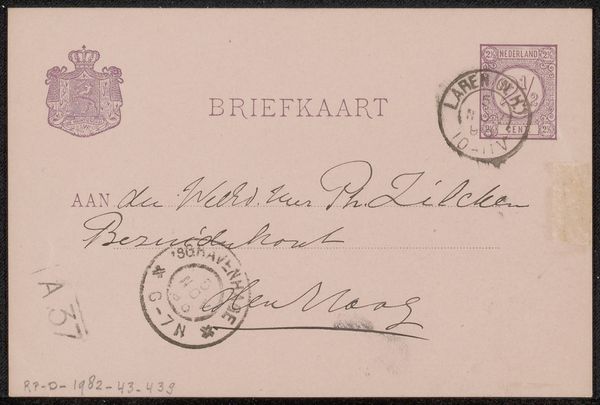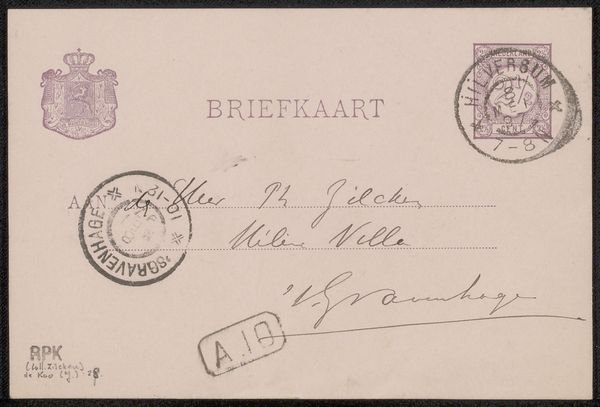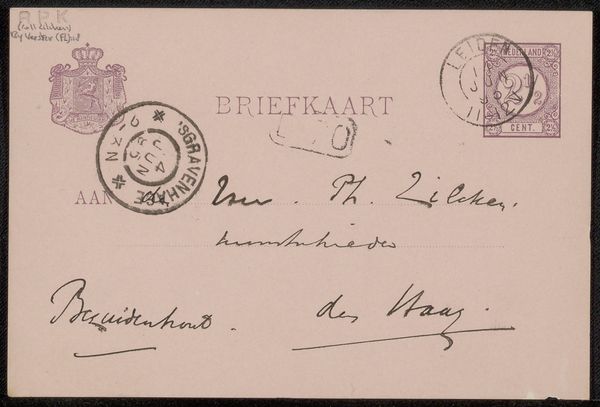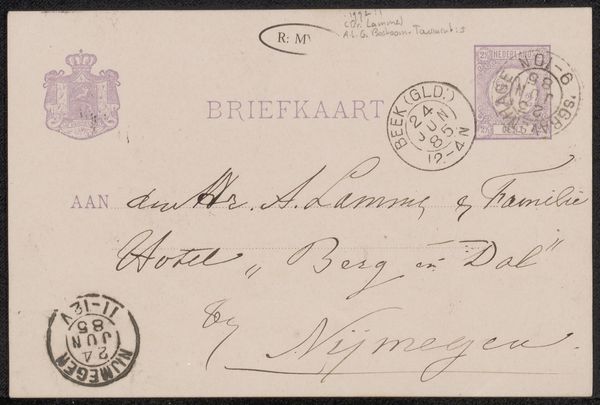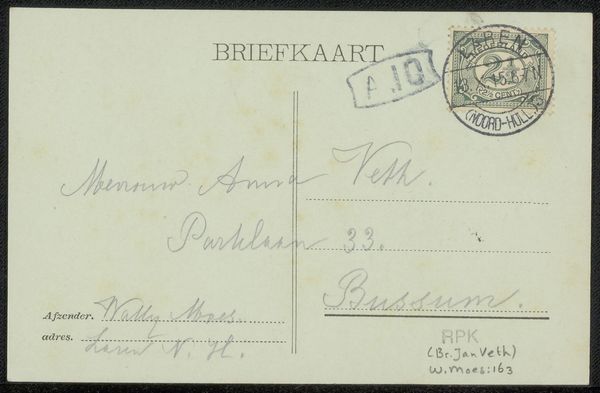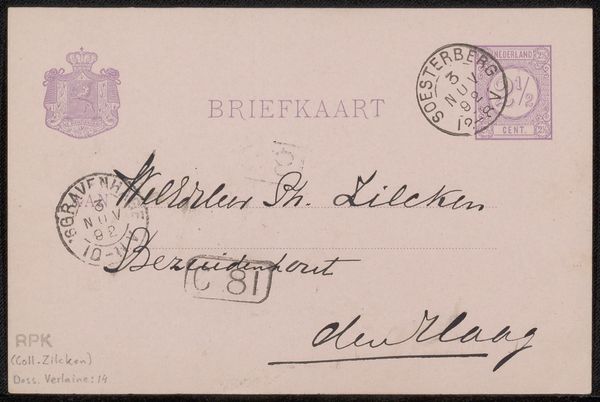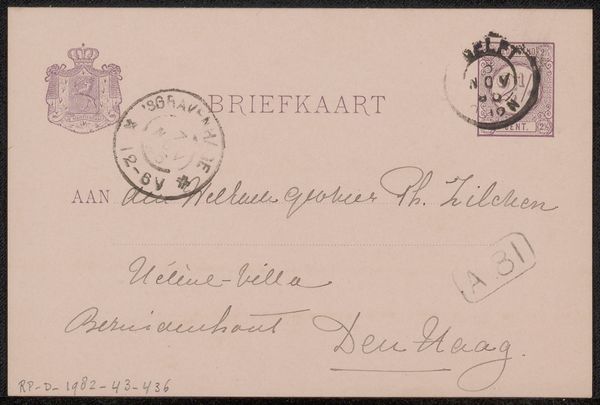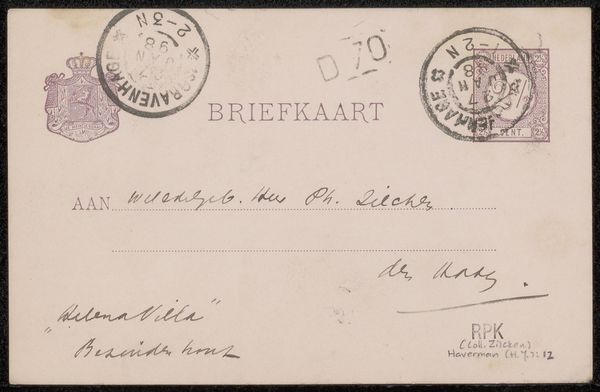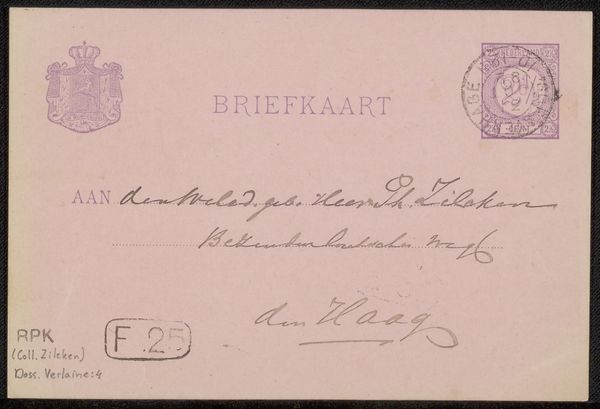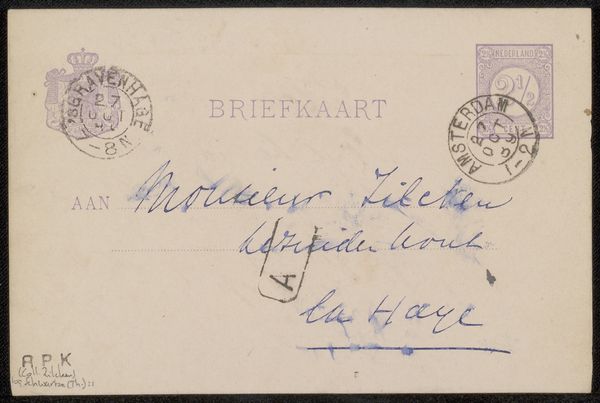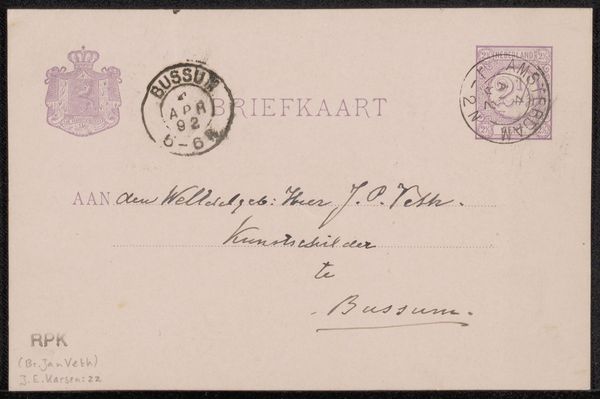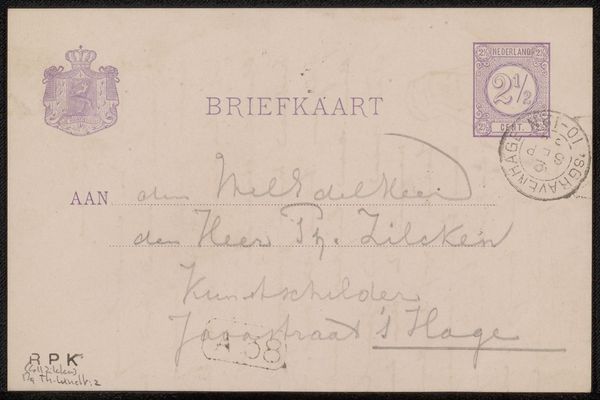
drawing, graphic-art, ink, pen
#
drawing
#
graphic-art
#
hand-lettering
#
old engraving style
#
hand drawn type
#
hand lettering
#
personal sketchbook
#
ink
#
hand-drawn typeface
#
ink colored
#
pen work
#
sketchbook drawing
#
pen
#
sketchbook art
#
calligraphy
Copyright: Rijks Museum: Open Domain
Curator: This artwork, titled "Brief aan Philip Zilcken," likely dating back to 1899, is an ink drawing currently held in the Rijksmuseum. Editor: My immediate impression is one of formality, but with an undercurrent of… vulnerability. The hand-lettering is beautiful, yet the marks from the postal service give a transient, almost ephemeral quality to the whole piece. Curator: It's fascinating to consider this from the vantage point of its materiality. Ink on paper—such commonplace materials that carried weighty sentiments and crucial communications across geographical distances. These aren’t just marks, they represent human interactions, economic systems and the social norms embedded within letter-writing in the late 19th century. Editor: Precisely. The postmark is more than just a stamp; it’s a symbolic anchor connecting to a specific moment and place, Sarajevo, adding another layer of significance beyond the message itself. The visual symbols give insight to not only what was being written but the environment that supported that writing. Curator: The handwriting itself offers insights. It reflects not only Storm van 's-Gravesande’s artistry, but his position within a society that valued elegant script as a form of self-presentation, even an indication of social standing. And to whom did this social standing grant privilege and access, particularly during that period? Editor: Indeed, calligraphy has long carried cultural and social baggage. This work's reliance on specific handwriting also indicates the social rituals tied to that level of artistry. Curator: The drawing allows us to examine not only the surface aesthetic, but the broader power dynamics interwoven within communication itself, reflecting an entire matrix of historical events, identity, and class. Editor: In that sense, this ‘brief’ work contains universes of expression, reflecting the era it emerged from and subtly revealing shared truths that last beyond it. It’s both deeply personal and powerfully evocative. Curator: It's a poignant reminder that even simple correspondences can reflect significant cultural and historical narratives. Editor: Yes, it underlines how, by focusing on visual clues, we can unlock the secrets in front of us.
Comments
No comments
Be the first to comment and join the conversation on the ultimate creative platform.
